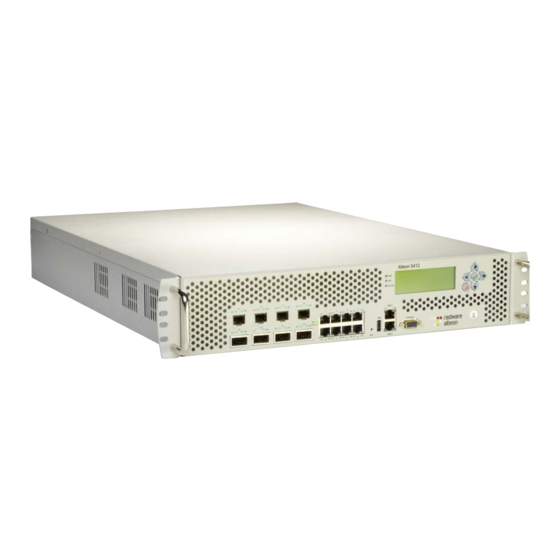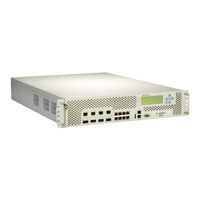
Radware Alteon Delivery Controller Manuals
Manuals and User Guides for Radware Alteon Delivery Controller. We have 2 Radware Alteon Delivery Controller manuals available for free PDF download: Application Manual, Installation And Maintenance Manual
Radware Alteon Application Manual (842 pages)
Application Switch Operating System
Table of Contents
-
-
Using SNMP44
-
-
-
SCP Services72
-
-
Deny Routes
79
-
-
Overview99
-
-
-
Stability121
-
Routing Updates121
-
RIP Versions122
-
RIP Features123
-
Poison123
-
Multicast123
-
Default123
-
Metric123
-
Authentication123
-
-
-
Route Maps
126 -
BGP Attributes
130
-
-
OSPF Overview137
-
-
-
-
Mapping Ports
194 -
Delayed Binding
203
-
-
-
SSL Policies338
-
-
-
Stacking Filters358
-
Default Filter359
-
Filter Logs361
-
-
Reverse Session363
-
Return to Proxy363
-
-
-
Static NAT384
-
Dynamic NAT386
-
FTP Client NAT388
-
Overlapping NAT389
-
-
Ipv6 Filtering397
-
Return-To-Sender401
-
-
-
What Is ADC-VX403
-
ADC Form Factors403
-
Vadcs
403-
Vadc Management405
-
-
Dashboard Charts413
-
Settings Menu417
-
Image Management436
-
HA ID Management452
-
What Is an HA ID453
-
HA ID Settings453
-
Modifying HA Ids453
-
-
-
-
-
Overview455
-
-
-
-
Failure Types503
-
Service Failure503
-
Server Failure504
-
-
-
-
VRRP Overview507
-
VRRP Priority509
-
-
-
-
-
-
Using Cookies584
-
-
Cookie Formats587
-
-
-
Background601
-
-
-
Multi-Homing631
-
-
Outbound Traffic633
-
Inbound Traffic634
-
-
-
-
Using GSLB705
-
GSLB Overview706
-
Benefits706
-
How GSLB Works707
-
GSLB Metrics708
-
-
GSLB and DNSSEC712
-
-
-
Contracts761
-
Policies766
-
Time Policy766
-
Rate Limiting767
-
Traffic Shaping769
-
Advertisement
Radware Alteon Installation And Maintenance Manual (98 pages)
Next-generation application delivery controller
Brand: Radware
|
Category: Controller
|
Size: 6.1 MB
Table of Contents
Advertisement

